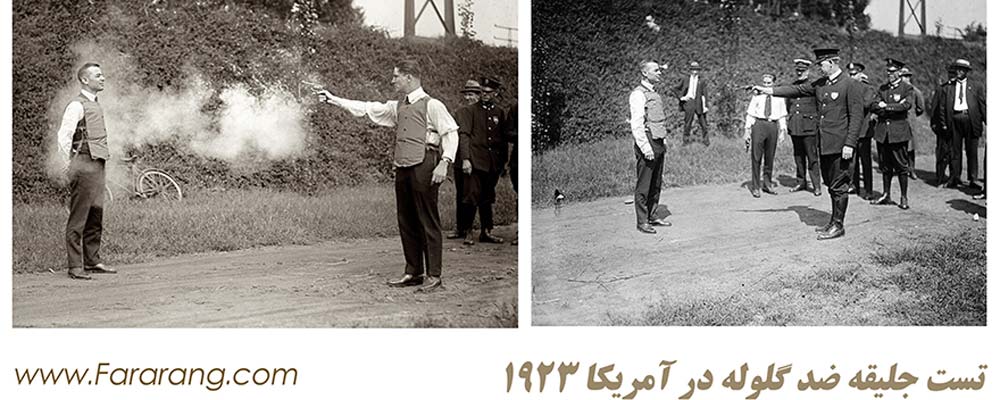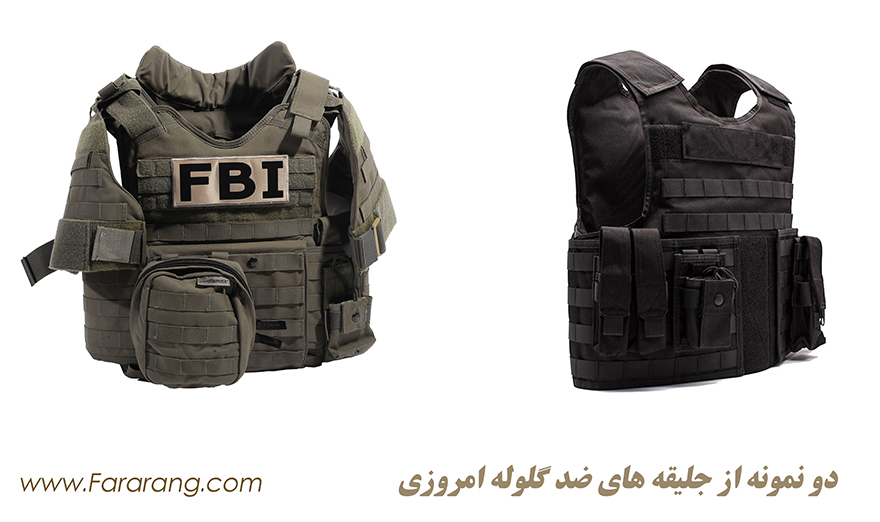Information about bulletproof fabrics and bulletproof vests
Information about bulletproof fabrics and bulletproof vests
Ever since the invention of weapons, humans have always been looking for clothes and armors that are resistant to them. This competition has always been going on since the invention of arrows and spears and the creation of various types of knights' clothing, until the time when firearms, rifles, and revolvers were also invented. But the production of clothes to deal with rifle bullets was not so simple and required technology and materials much more resistant than natural materials in order to prevent the penetration of bullets into soldiers' bodies.
In line with this need, the production and weaving of fabrics, vests, and clothes made of polymer materials began almost in 1900, and this industry gradually progressed along with the development of weapons. In the 1980s, by adding materials and strengthening aramid fabric, the craftsmen were able to produce a more resistant and very strong type of fabric. Of course, in practice, no bulletproof clothing and no vest can fully claim to be bulletproof, and these fabrics and clothes are always vulnerable to some types of cartridges and bullets.

Bulletproof Fabrics:
The simplest approach to increasing the strength of anything is to add a thick steel plate protector (or any other metal) that works. But sometimes adding weight won't work, for example adding heavy metal plating to your armor or suit will make it heavy, slow, unmanageable and useless. In fact, it is better to call bulletproof fabric as bulletproof fabric, not bulletproof, because this type of fabric can withstand the pressure exerted by the bullet to a certain extent and distribute it throughout the entire garment or vest.
If the speed and power of the bullet is higher than a limit, this type of fabric will lose its full effectiveness. Generally, if a war bullet has a sharp tip, it will pass through the bulletproof vest or at least cause some damage to the person's body.
One of the main bases of bulletproof fabrics is Aramid Fabric (aromatic polyamide). Aramid is a type of polymer synthetic fabric that is very resistant to heat and impact. These fabrics are used in the aerospace, military, some super sports cars and rubber industries. In aramid fabrics, chain molecules are placed along the fabric axis with strength and intensity and create very strong chemical bonds together. Bulletproof fabrics with these fabrics are also resistant to fire and sometimes do not melt up to a temperature of 2000 degrees Celsius; Because of this characteristic, in addition to the abundant use of this type of fabric in the production of bulletproof clothing, it is also used in the production of thermal and electrical insulation.
Bulletproof clothing or bulletproof or ballistic vests are clothing specifically designed to protect the wearer from the impact of firearm bullets on the vital organs of the body. Basically, this material absorbs and reduces the impact of projectile bullets and small fragments by preventing it from penetrating the user's body. Bulletproof clothes are generally worn on the torso, these clothes in newer generations are made by layering woven fabrics of bulletproof fabrics with ballistic plates of metal, polyethylene or ceramic plates inside.
Bulletproof vests, commonly worn along with other protective components by police forces, security guards, combat soldiers, and prominent citizens, etc., capture and deform a bullet by expanding its force and slowing it down through friction.

Features of bulletproof fabric:
The most common fabrics used in the production of bulletproof vests are carbon and glass, but there is a third option that is a more suitable choice, aramid, which actually has better ballistic properties. The fabric called meta-aramid or Kevlar is considered the main fabric of today's bulletproof vests. Some of the features of these Kevlar fabrics are:
• Resistance to wear and corrosion
• Resistance to organic and chemical solvents
• Being non-conductive and not transmitting electricity
• High resistance to melting and catching fire due to stability at high temperatures
• Resistance to ultraviolet rays
• Resistance to bacteria and sweating (in new types with nano technology)
In terms of tensile strength, Kevlar fabrics are five times more resistant than steel, and as we said before, one of the most common uses of Kevlar fabric s is making cloth and bulletproof vests. Of course, in recent years, these fabrics have been optimized with nano technology, and properties such as being waterproof and antibacterial, and resistance to acids and chemical solvents have also been added to them.

Maintenance of fabric and bulletproof vest:
The maintenance of these types of fabrics and vests is a little more difficult and requires more care than normal fabrics. Bulletproof fabrics, like many products of the textile industry, have a date of use and useful life; The best performance of bulletproof fabric is five years after the date of production. Bulletproof fabrics, like other fabrics, should be washed over time to prevent them from rotting in addition to being clean.
Any wrinkles and folds will reduce the resistance of the fabric against the pressure of the bullet; If it gets wet, the resistance of the bulletproof fabric will decrease, because the weave of these fabrics is dry and stable, so the increase in the weight of the user and the size of the person who uses the bulletproof vest causes more elasticity and a decrease in resistance to the bullet will penetrate into the fabric.
Bulletproof clothing that has been hit by a bullet once should not be used again, because the bulletproof fabric cannot be repaired. Almost all bulletproof fabrics are not resistant to sharp objects such as knives, bayonets and even arrows, and the idea that a person is fully protected by wearing them is dangerous. In many cases, even though the bulletproof vest prevents the marble bullet from penetrating the body and causing serious injury, but due to the very high pressure applied to the body, the person suffers extensive contusions or bruises, and in some cases causes unconsciousness or even broken ribs. also becomes; For this reason, it is never recommended to test and try these vests when they are on the person's body.

 Full specifications and price list
Full specifications and price list